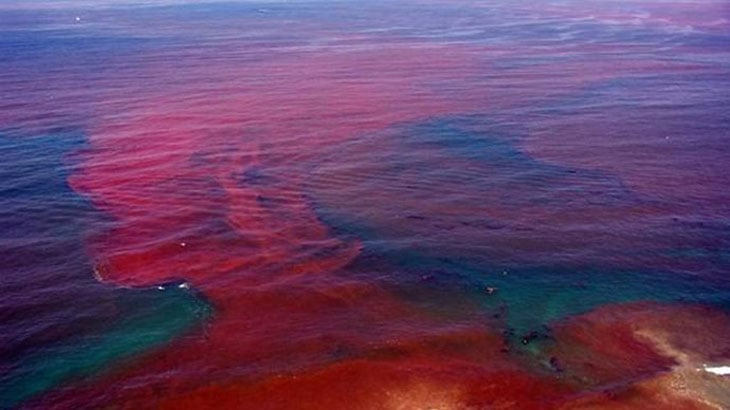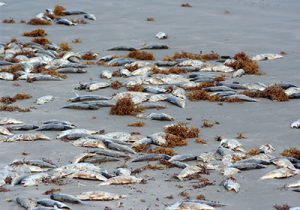
In Florida, the summer months mean long days by the beach or out on the water. However, summer brings something else to the Florida coast besides residents and tourists; it also brings red tide.
If you’re a Floridian – at least one living on the Gulf Coast – red tide is not an uncommon sight. Red tide is a semi-regular natural event that occurs throughout the Gulf of Mexico and among Florida’s coastal waters. But if you’ve got loved ones visiting from out of state or it’s your first visit to Florida, you may be nervous about what you are hearing regarding red tide.
So what is red tide? What are common effects and whom does it affect?
This article will answer some frequently asked questions concerning red tide and its health effects so your next visit to your favorite beach doesn’t catch you by surprise.
What is red tide?
Red tide is the result of a higher-than-normal concentration of a certain type of algae: Karenia brevis (K. brevis). While recent occurrences have been more acute than previous years, red tide events have been documented as far back as the 1700s.
How long does it last?
The frequency and potency of K. brevis blooms depend on a variety of factors, from exposure to sunlight, water salinity, and the direction of winds and currents. Typically, blooms will subsist in certain pockets for 1-2 weeks before receding, but there have been some documented cases lasting up to a year.
What are its health effects?
K. brevis do contain toxins that can pose a health risk, however the symptoms and severity can range from person to person. For most, blooms only pose a mild irritant; you may notice a persistent cough or itchy/watery eyes; but if you have existing respiratory issues, red tide may pose more serious health risks.
Before heading out to the beach, it’s best to know how red tide effects you – and also avoid highly impacted areas.
Is it safe to eat seafood?
One big question we always hear concerning red tide is how it affects local seafood. You may worry that consuming any type of seafood during a bloom may lead to the ingestion of toxins. However, this is only half true.
You shouldn’t worry if you buy fin or shellffish from a local seafood market or restaurant. Typically, these places will have offerings outside the local market selection and are also closely monitored for quality and safety by federal, state and municipal regulations.
It is important to know that recreational harvesting of clams and oysters is banned in red tide-affected areas and should not be eaten. However, other seafood commonly classified as shellfish (crab, scallops, mussels) may be eaten.

The images of dead fish lining the shores may seem like cause for alarm, but it’s not quite what you think. Fish are affected by red tide toxins, but the mass die-offs you see are actually the result of suffocation rather than poisoning. In thick algal blooms, oxygen in the water can become so depleted that marine organisms either leave the area or die from lack of oxygen.
While red tide toxins do accumulate in the guts of fish, they do not spread throughout the rest of the body. You are able to eat locally caught fish as long as it has been properly cleaned and filleted.
Additional Resources
You can learn more about K. brevis algae and its effects here. For more Florida health and personal injury news, check out our blog.
